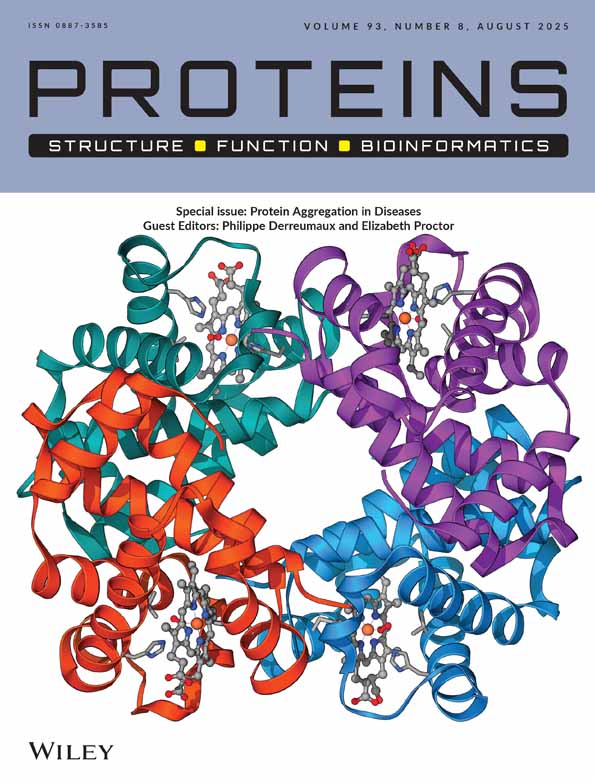Modulation of human cytidine deaminase by specific aminoacids involved in the intersubunit interactions
Abstract
An investigation was made of the role exerted by some residues supposed to be involved in the intersubunit interaction and also in the catalytic site of homotetrameric human cytidine deaminase (T-CDA). Attention was focused on Y33, Y60, R68, and F137 residues that are a part of a conserved region in most T-CDAs. Hence, a series of site-directed mutagenesis experiments was set up obtaining seven mutants: Y60G, Y33G, Y33F Y33S, F137A, R68G, and R68Q. Each active purified mutant protein was characterized kinetically, with a series of substrates and inhibitors, and the effect of temperature on enzyme activity and stability was also investigated. Circular dichroism (CD) experiments at different temperatures and in presence of small amounts of sodium dodecyl sulphate (SDS) were performed in all the soluble mutant CDAs. The results obtained by site-directed mutagenesis studies were compared to the crystallographic data of B. subtilis CDA and E. coli CDA and to molecular modeling studies previously performed on human CDA. The mutation of Y60 to glycine produced an enzyme with a more compact quaternary structure with respect to the wild-type; this mutation did not have a dramatic effect on cytidine deamination, but it slightly affected the binding with the substrate. None of the mutant CDAs in Y33 showed enzymatic activity; they existed only as monomers, indicating that this residue, located at the intersubunit interface, may be responsible for the correct folding of human CDA. The insertion of an alanine instead of phenylalanine at position 137 led to a soluble but completely inactive enzyme unable to form a tetramer, suggesting that F137 residue may be important for the assembling of the tetramer and also for the arrangement of the CDA active site. Finally, R68G and R68Q mutations revealed that the presence of the amino group seems to be important for the catalytic process but not for substrate binding, as already shown in B. subtilis CDA. The quaternary structure of R68Q was not affected by the mutation, as shown by the SDS-induced dissociation experiments and CD studies, whereas R68G dissociated very easily in presence of small amounts of SDS. These experiments indicated that in the human CDA, the side chain of arginine 68 involved in the catalytic process in one subunit active site might come from another subunit. The data obtained from these studies confirmed the presence of a complicated set of intersubunit interactions in the active site of human CDA, as shown in other T-CDAs. Proteins 2008. © 2007 Wiley-Liss, Inc.




